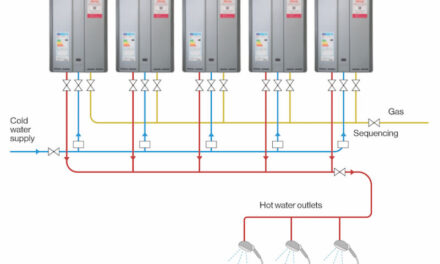By Clémence Fischer, Director, Sustainability Solutions and Benoit Hemon, Managing Director, Sustainability Solutions, at ENGIE Impact
We have already entered the Climate Decade, meaning the world must act now if we are to meet global targets set in Paris and Glasgow. Consequently, organisations are under increasing pressure to move away from their overreliance on fossil fuels.
However, developing and implementing a decarbonisation strategy requires a transformation at a larger scale than anything most businesses will ever face. It will not be easy.
One of the critical problems ENGIE Impact has identified is that many companies make incorrect investment decisions. A successful decarbonisation strategy requires a fundamental shift in how investment decisions are made. Which implies moving away from decarbonisation solutions with a narrow, short-term focus on return on investment (ROI), and instead focusing on evaluating scenarios based on a total cost of ownership (TCO).
Kickstarting your decarbonisation strategy
Often when deciding which decarbonisation levers to use, the decision making process will be handed to an individual stakeholder who will decide what action should be taken in their own scope – whether that be finance, procurement, operations, engineering or sustainability. Three common difficulties arise when this approach is taken:
In an increasingly complex energy system, organisations should opt for an integrated approach. This approach enables the leveraging of a growing number of conversions between energy vectors, helping to avoid making short-sighted investment decisions that reduce the capacity to adapt to technological advances. Say, for example, your organisation replaces an ageing gas boiler with a more efficient one. This may deliver a quick win, however, it willalso lock in the boiler’s carbon emissions for the next 30 years. Whereas if an integrated modelling approach was taken, you would have been able to identify a strategy leading to an improved carbon outcome by leveraging synergies between technologies.
So, how can your organisation shift to an integrated solutions approach?
Applying a long-term view to investment decisions
All too often questions about investing in decarbonisation measures are made using traditional capital allocation guidelines that prioritise ROI, without considering a long-term investment framework. Prioritising solutions based on ROI gives rise to challenges like disqualifying the possibility of future technology, competing with non-decarbonisationinvestments, and is cost additive with no payback.
Instead, a better approach is to use a TCO analysis that considers the zero-carbon end state and pairs it with a scenario-based evaluation. This approach does not merely consider the impact of replacing one technology with another, but accounts for the sum of the CapEX for your decarbonisation technology, commodity costs and operation and maintenance over a period of time. This approach provides three distinct advantages:
Taking a long-term view also considers risk transfer and the risk mitigation benefits of a shift toward outcome-based contracting. As indicated by our clients, organisations face several risks when implementing their decarbonisation strategy. Such as, a lack of experience working with new technology, stranded assets, and changing regulations, among others.
However, these risks can be mitigated through outcome-based contracting, or Energy-as-a-Service agreements. EaaS agreements shift responsibility for the management of your decarbonisation project to a specialised provider. Allowing for a wider pool of projects to be undertaken while limiting overall costs. Without the limitation of payback periods and debt limits, the most impactful projects don’t get sidelined. As a result, carbon reduction and long-term savings are maximised.
Decarbonisation is a challenge, but is one we cannot ignore. By developing integrated solutions rather than working in silos you can avoid common pitfalls. Moreover, companies should embrace a TCO approach rather than calculating short-term ROI if they are to achieve Net Zero. We believe that organisations might be surprised to find out that a TCO estimate arrives at the same cost as business as usual but adds significant benefit. Indeed, by investing in a decarbonisation strategy, organisations can drive business growth and improve profits.



